Wat Doi Suthep is the pretty little temple at the top of a 1000 meter mountain overlooking Chiang Mai. This important religious pilgrimage destination is situated only 45 minutes out of Chiang Mai and therefore equally popular with tourists. When visiting Chiang Mai, it is a must. Getting there independently is easy, and yet it took me a couple of hours to get there due to some basic traveller mistakes. Let’s make sure you don’t fall into the same traps.
– How to get to the temple –
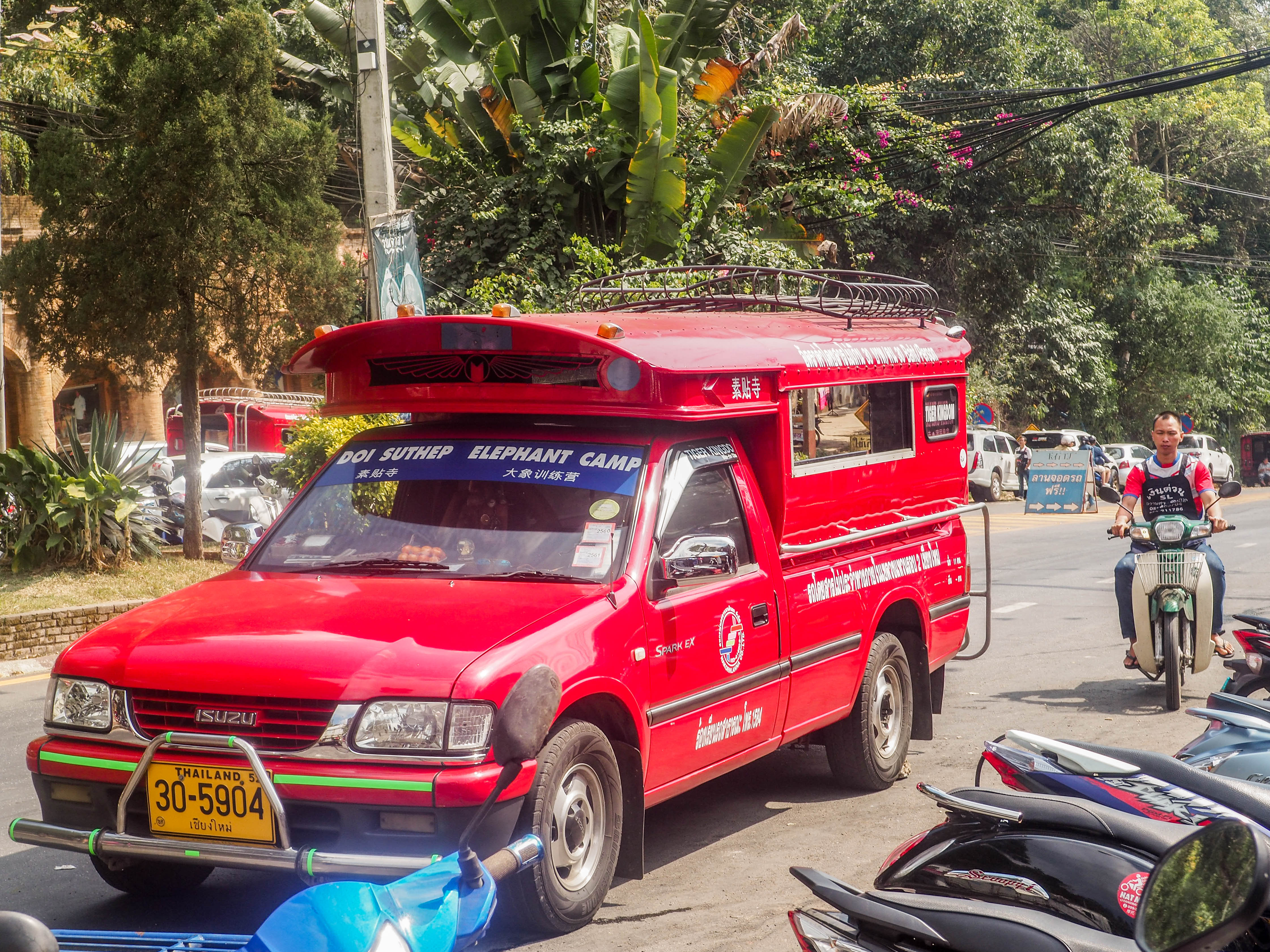
As with most tourist attractions, there are many options to visit Wat Doi Suthep. The easiest ways are to book a guided tour, or a private Songthaew (pick-up truck taxi). But besides the fact that this will cost you around 600B, where’s the fun in that? Wat Doi Suthep is easily done independently by either taking a shared Songthaew taxi or by driving there on a scooter bike or even on a bicycle. Normally I would choose the bicycle without second-guessing. I am Dutch, I love active travel and of course, I am always seeking to promote zero-emission transport. However, gaining 1000 meters in elevation over the course of about 30KM is not going to be fun for anyone. Unless you like pain and suffering and don’t forget sweat-drenched clothes. On top of that, after having had a few too many drinks the night before, I certainly wasn’t feeling it.
Driving a scooter bike
So if cycling is a no-go there are two options left. Either hiring a scooter bike or taking a shared Songthaew taxi. Distance wise, taking the scooter is perfect. It gives you the flexibility to stop as you please, you can include some other sights in your itinerary (in the rainy season the Huay Kaew Waterfall is an awesome add-on) and besides, who doesn’t like the wind streaming down your face while riding a scooter?
Bikes can be rented all over town, day-rates hover between 200 and 300 baht. Usually, your passport is required as a deposit. Take into account that the road is windy and steep with many hairpin-corners. This is not the easiest ride, especially considering the traffic on the way is quite heavy.
Taking a Red Songthaew
Costs 2-way: 160 baht. This is the option I chose because it is the easiest and cheapest way to get there. That is if everything goes according to plan. On paper, this one is a breeze: first, you take a red Songthaew taxi from anywhere in town and ask the driver to take you to either Chiang Mai University or Chiang Mai Zoo. Costs: 40 Baht per person. From there you take a second Songthaew to the temple for another 40 baht. You have to take two different rides because the second part is quite long and the only destination around is the temple so taxi’s wait until they fill up (they fit 10-15 people in the same small Songthaew that already gives you claustrophobia if you are sharing it with 5 others, but I guess this is ‘part of the local experience’).
Sound easy enough right? That’s what I thought when I, accompanied by a German friend I made a couple of days earlier, got into a Songthaew and happily told the driver to take us to Chiang Mai University. Not knowing what to expect we got out when we were right in front of the university itself. We got out, did not immediately see a songthaew around and were quite hungry so we decided to first have some lunch. We found a little place where a couple of students were eating. We figured if the locals like it, it must be good. It was, I probably had the best seafood noodle soup I had tasted in a while, there. Unfortunately recommending it to you is not very helpful considering we were totally in the wrong place, which we didn’t realise at that time.
After lunch, we started to haul songthaews at the main road but to our astonishment, they all asked 400 baht or more to take us up the mountain. It took almost an hour before it finally sunk in that we were totally in the wrong place. A friendly student explained to us that we should have asked to be taken to the Chiang Mai University taxi-stand to go to the temple, which was about 2 miles from the place we were. We quickly found a tuk-tuk driver that took us to the right spot for 50 baht, and from there it was smooth sailing. The lesson of the day: be very specific where you want to be dropped off. Simply stating ‘Chiang Mai University’ or ‘Chiang Mai Zoo’ will not get you to the right spot. I feel quite stupid typing this considering this is obviously a classic backpacker-rookie-mistake. Sigh. I thought I was passed this.
The way back from the temple is even easier. Right at the drop-off point, at the foot of the temple, there are songthaews waiting to take people back into town. A ride to the Northern-gate costs 60B while a ride all the way to the Tha Phae gate sets you back 80B.
– What to see –
The village
I was expecting to be dropped off at the temple itself, but once there I realised how big of a tourist attraction this really is. There is a whole village at the bottom of the 309-step stairs (that leads you up to the temple) where you can buy food, souvenirs and tasty fruit-shakes. It isn’t necessarily a pretty little town but it means you do not have to stock up on water or food, prices aren’t really inflated either.
The Stairs
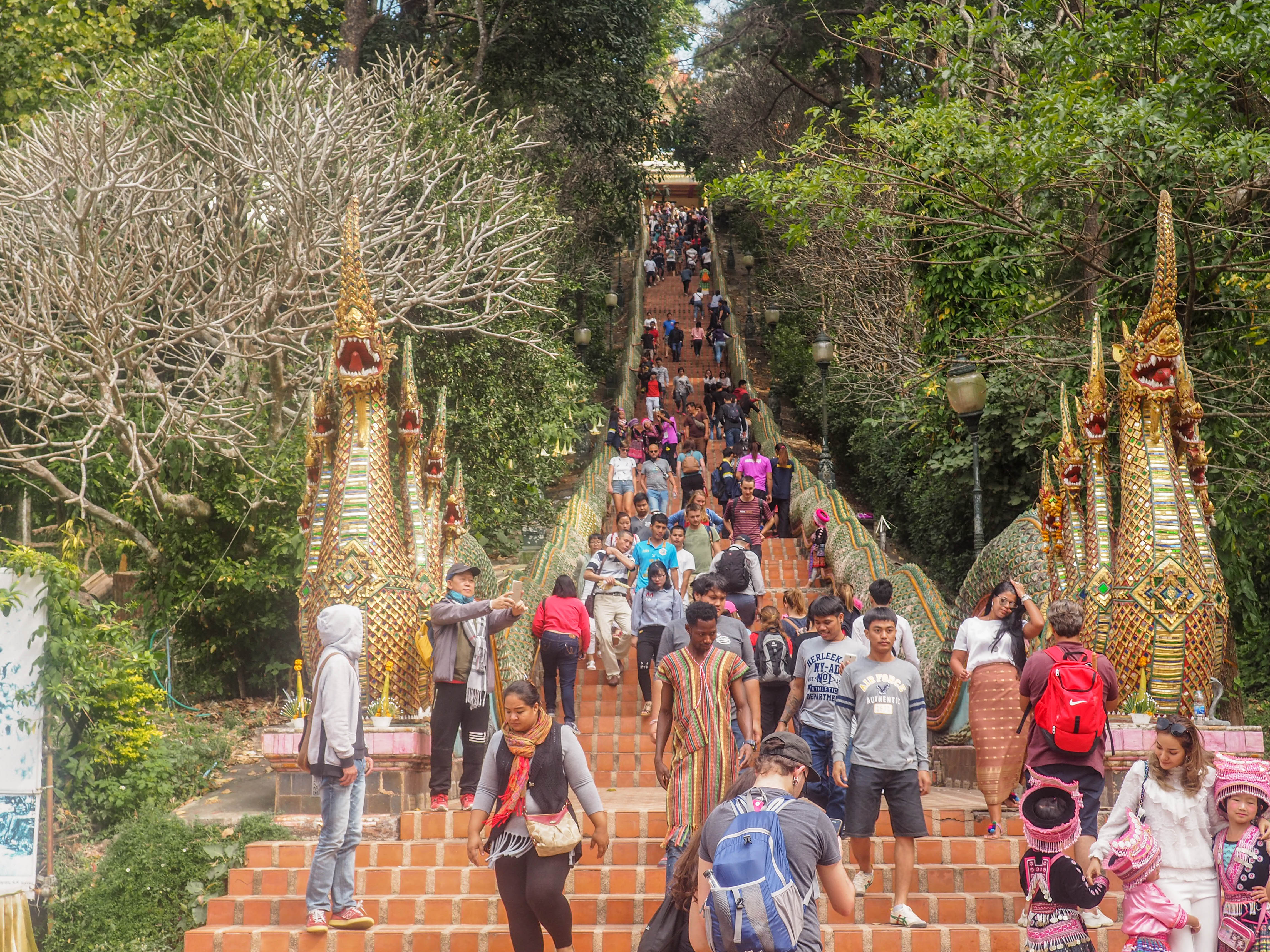
You don’t have to worry about not getting your cardio in when visiting the temple, as the only way to get up there is by taking the 309 steps. Okay, that is not completely accurate as there is a cable-car, but according to legend climbing the stairs will make sure you receive blessings from the gods that frequent the temple up top. The stairs themselves are nicely decorated and sort of look like a narrower and more beautifully decorated version of the stairs leading up to the famous Batu-caves in Malaysia.
The Doi Suthep temple
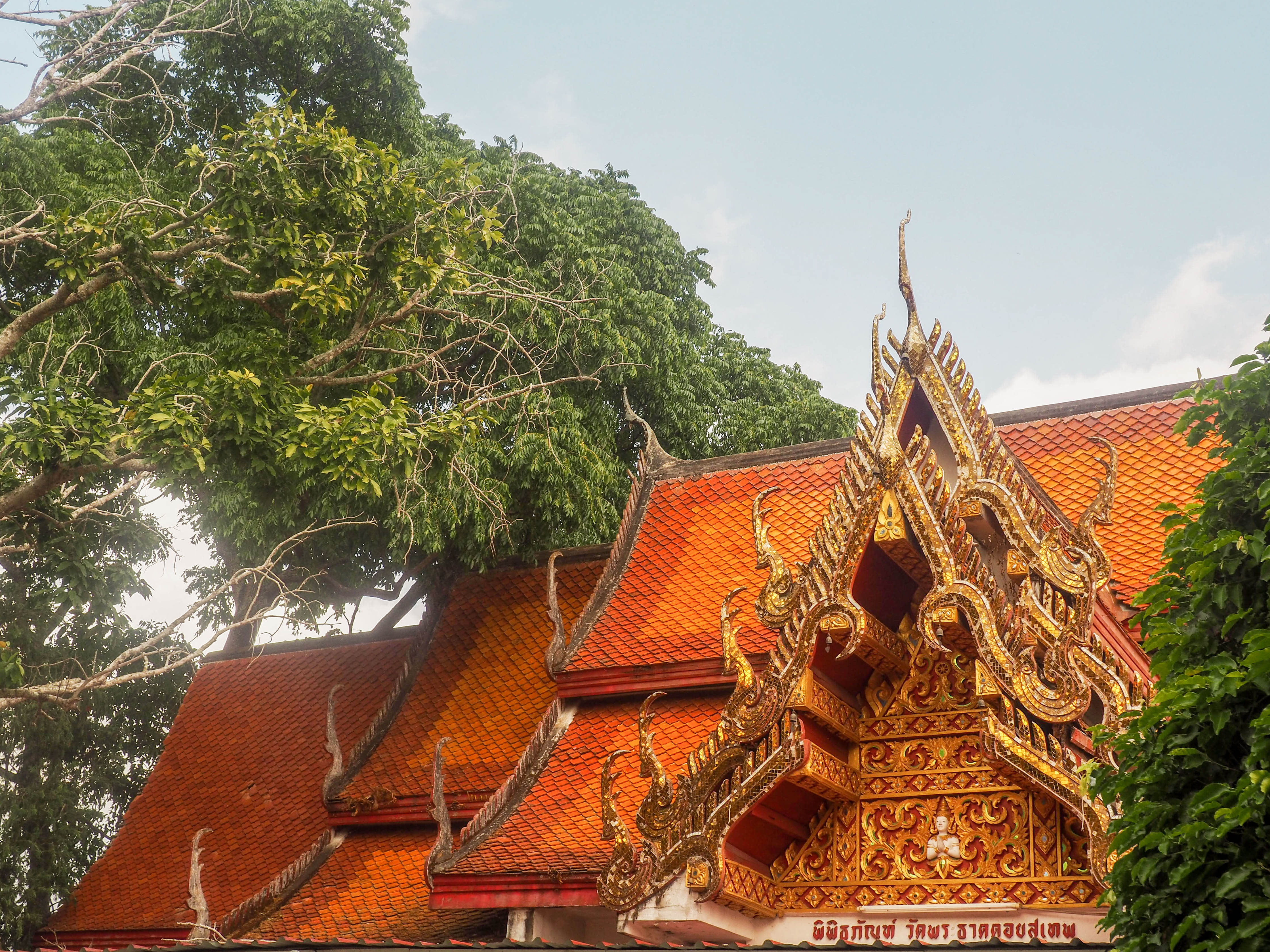
Entrance: 30B. I have heard that the entrance fee is actually 50 baht if you take the cable-car but I cannot verify that for sure. Wat Doi Suthep is a pretty little temple-complex. A few little 16th century temples dot the top of the mountain and a large terrace gives you an amazing view over the city. Once you are up there you suddenly also feel the attitude in the temperature, as it is on average about 6 degrees cooler up here than downtown. Take off your shoes when wandering around as a sign of respect and make sure you carry a sarong to cover up any overly exposed skin.
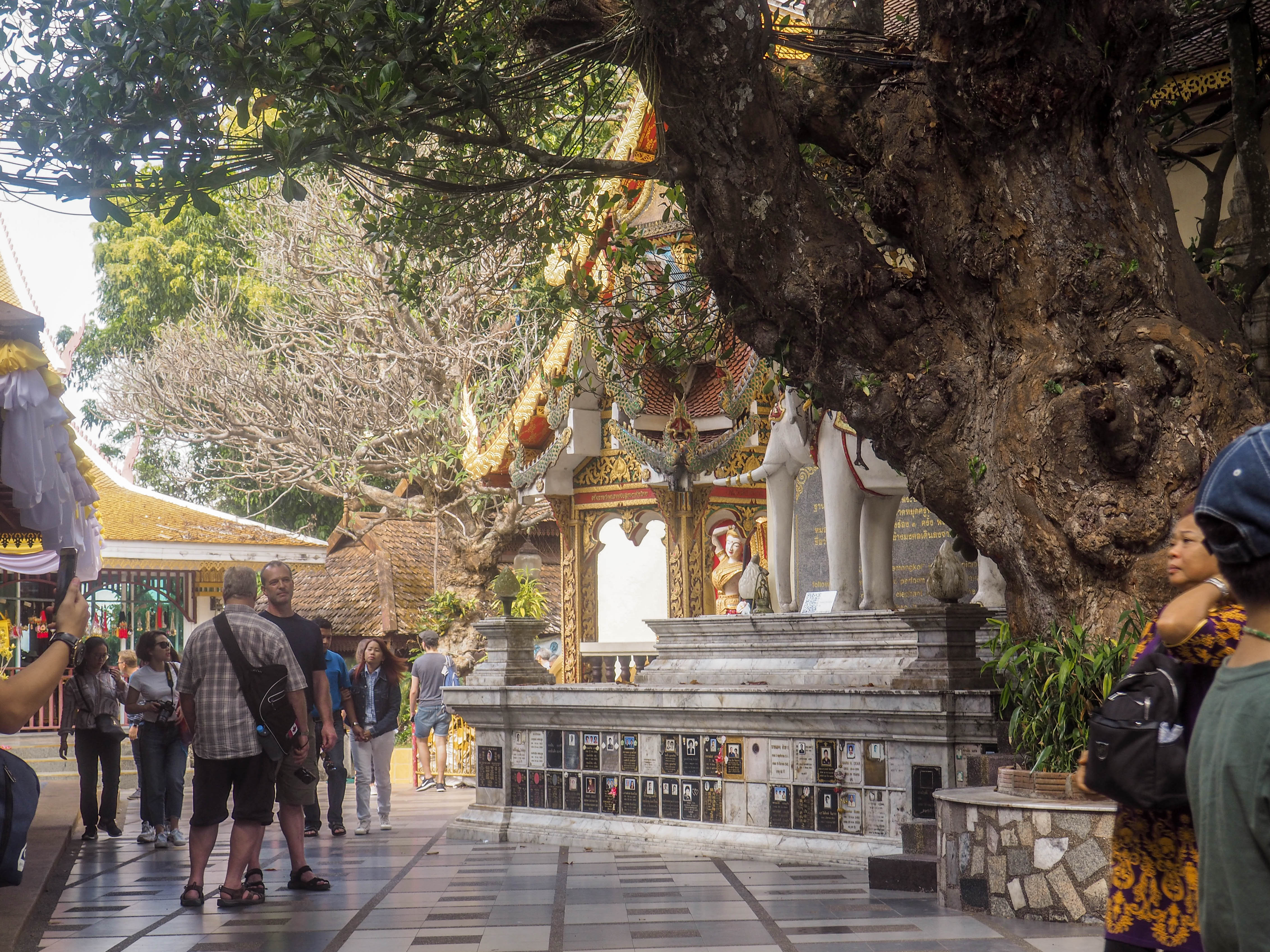
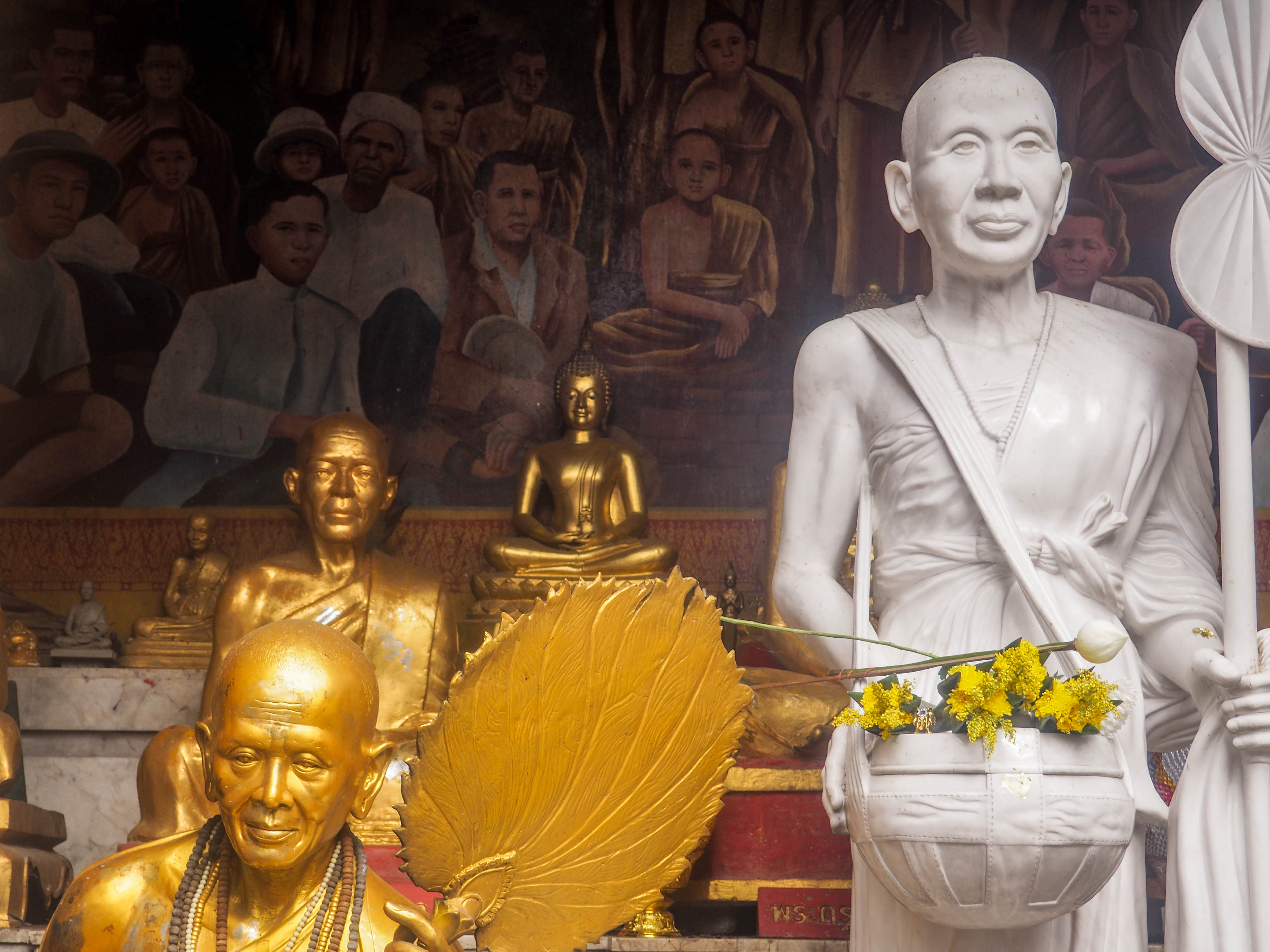
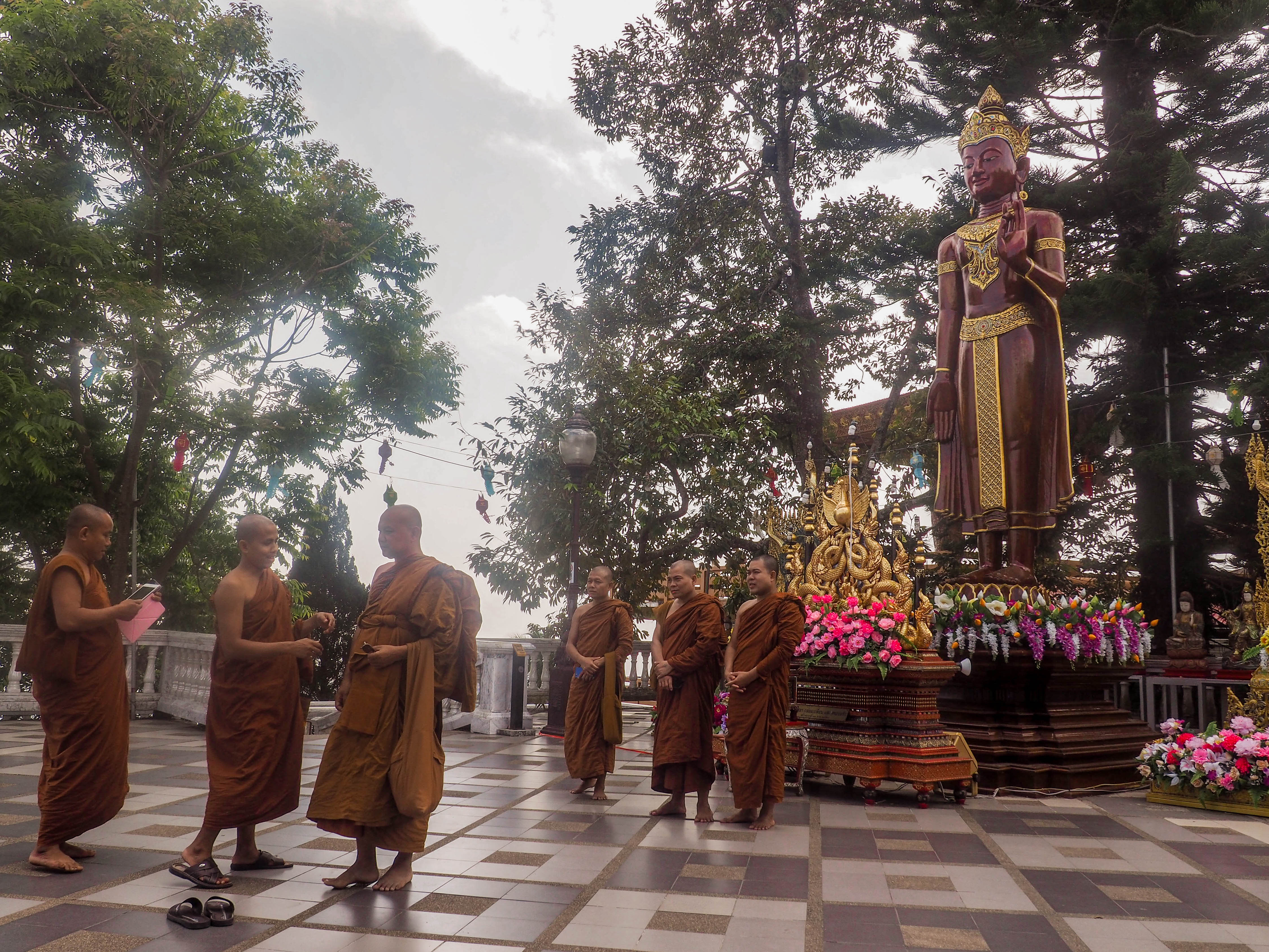
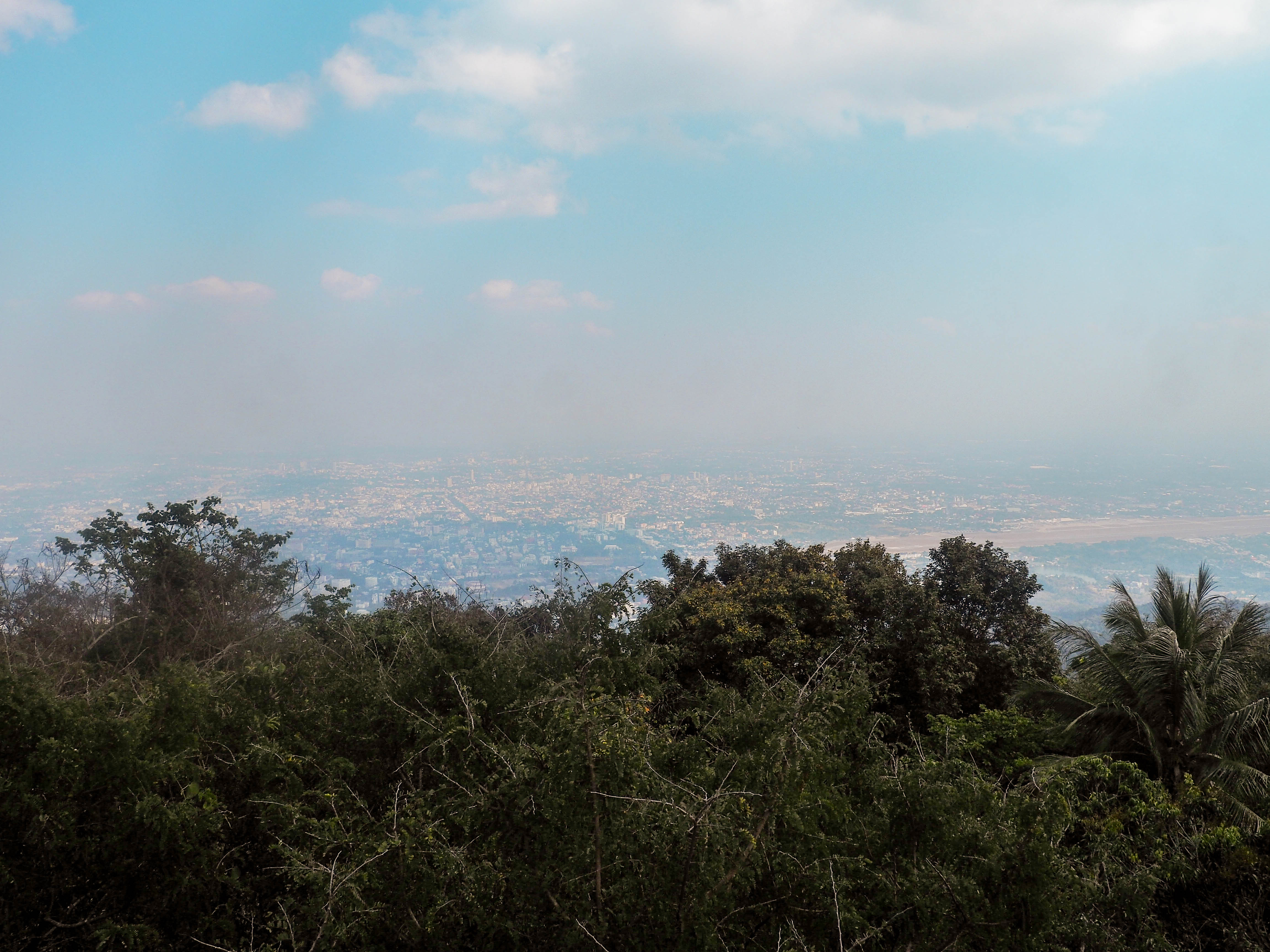
– Eating and sleeping in Chiang Mai –
Eating

Chiang Mai is filled with great places to have a bite, but my favourite is the nightly food market at the Mai Gate (the south-eastern gate of the inner-city). Food is cheap, tasty and plenty and they serve great fruit shakes for only 20B to go with your meal. Do not confuse this with the Night Bazaar, at the Tha Phae gate, often called night-market, which is great for shopping and also perfect to have a few drinks.
Drinking
For drinking one of the best places to go to is Ram Bar, where they also have free ladyboys shows every night. Zoe in the Yellow is also a great spot for outside- street parties and if it gets too rowdy for your liking you can just head over to rasta-bar, right next door (chilled vibes and music). Take into account that everything closes down after 1 AM, sometimes even earlier, around midnight. I really do not understand why as right up until the moment they cut the music most places are still really busy and vibes are generally good. There are a couple of places that pay the police enough to stay open a few extra hours (Spicy Bar) but these places are pretty terrible. Overly loud dub-step music, flashy lights and a rather dirty and raunchy atmosphere. Unless you are desperate for a drink, you probably want to skip out on this.
Sleeping
Green Sleep Hostel
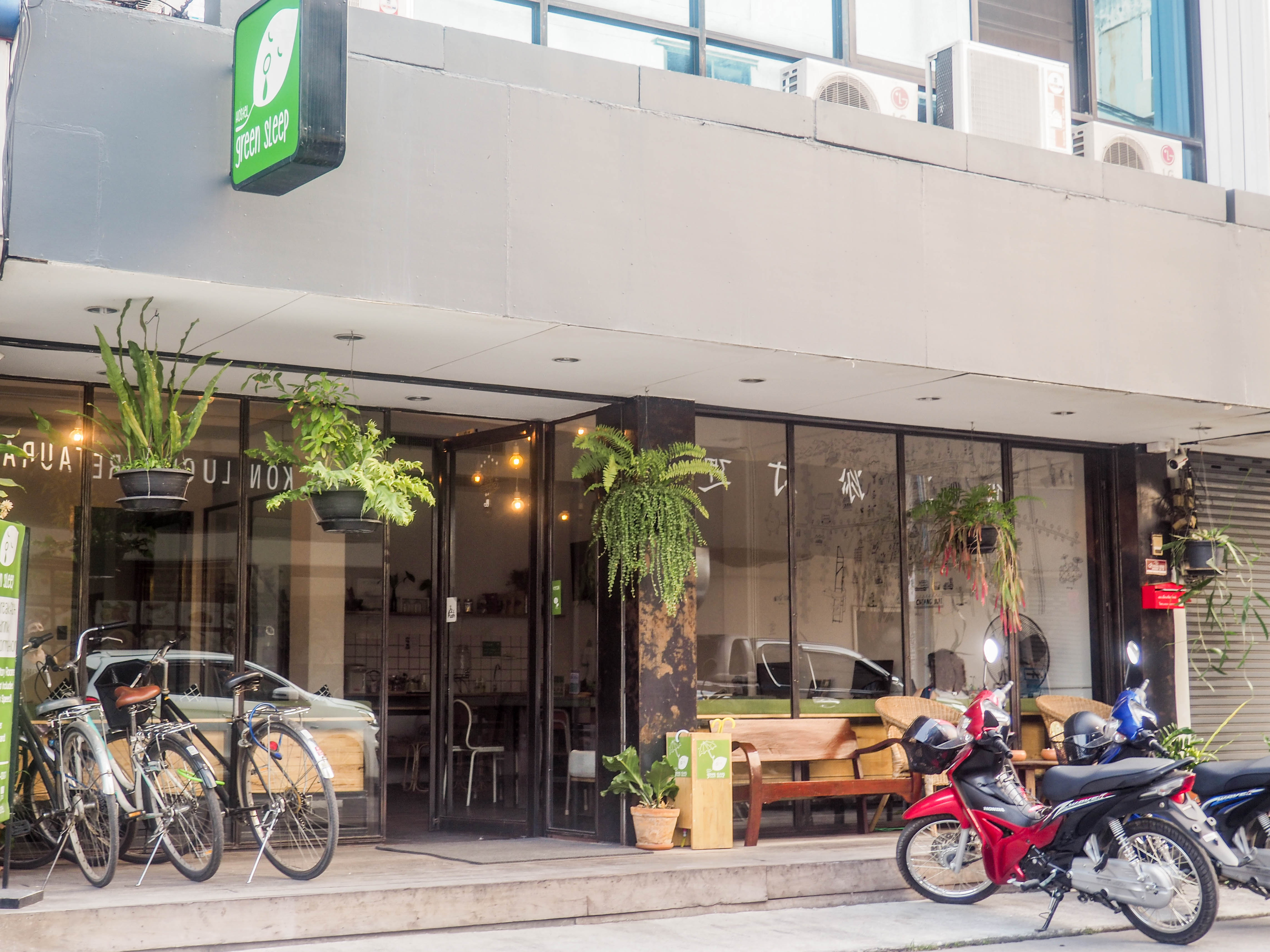


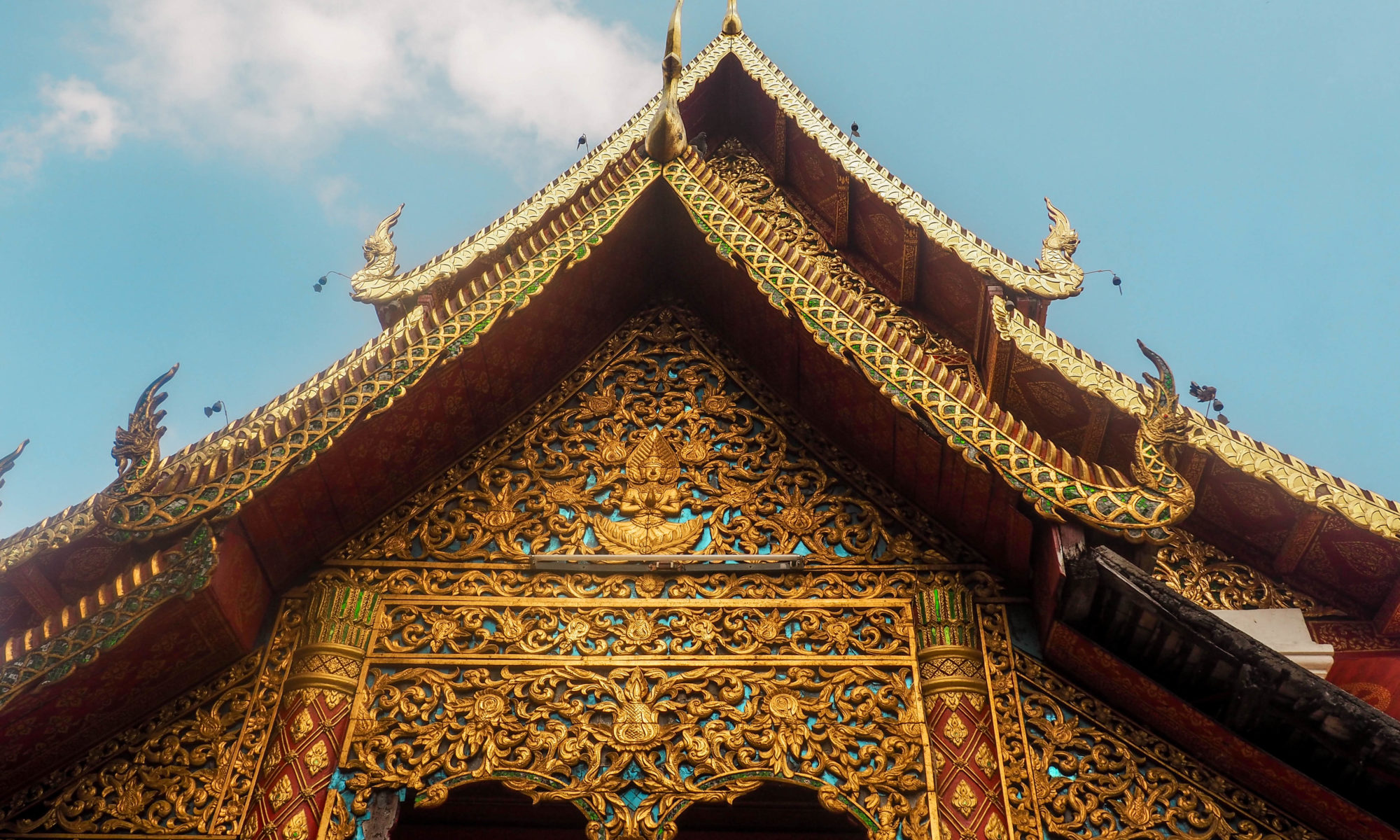
No Road Back, thank you for this post. Its very inspiring.